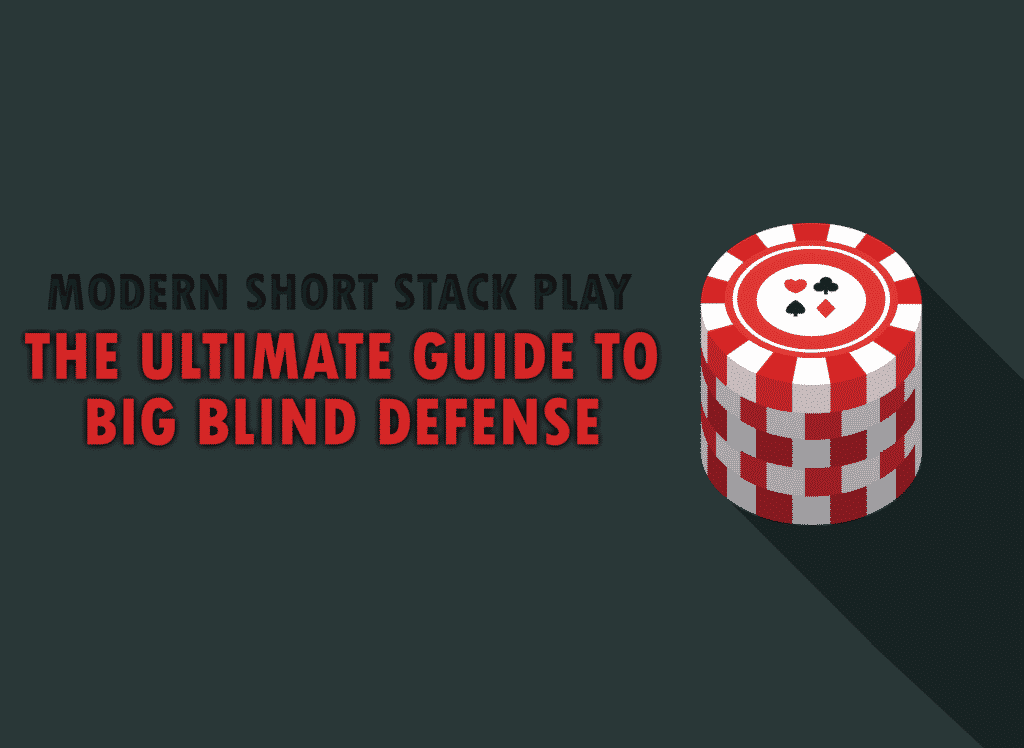Short Stack Poker Strategy
- Short Stack Poker Tournament Strategy
- Short Stack Poker Strategy Tournament
- Short Stack Poker Strategy
For many players who regularly sit down at cash tables in the modern game, once they have found some level of comfort with the quality of their 'full stacked 100bb' skills, one of the ways in which they frequently find themselves in awkward situations is when faced with an opponent wielding a stack typically sized between 20 – 50 big blinds. Here I hope to shed some light on short stack poker strategy to help improving players who are looking for some answers on the matter.
This information, along with our HUD stats should allow us to nail down exactly what strategy to use against them. No more guessing, or even better, no more nitting it up. Many players fall into the trap of folding too much against a short stacked opponent for reasons such as having a fear of getting shoved on and not knowing how wide they can profitably call. They just have a feeling that they don't want to get involved, assuming that it isn't so important anyway.
The shorter the stack the more extreme your adjustment should be. Rather than posting a number of hand charts for each stack size, I will attempt to give more general advice so you can think for yourself in-game, and do your own EV calculations to make yourself more comfortable.
Changing hand values
For our purposes we should distinguish the starting hands between high equity type, and low equity type/speculative.
Being short stacked is a situation that happens in all game types. In hyper-turbos and spin-and-go’s, for example, you start with a short stack. And in tournaments, you can expect to be short often. As you develop your skills, using this poker strategy guide, keep the first three tips in mind: Play cautiously, be aggressive when required, and study the table like it's your favourite movie. This tactic will keep your play in check and resist the urge to go “on tilt”. Don't try to make up losses with foolish bets.
and 86s are speculative hands which will not be ahead on so many flops when multiple players hit, but when they do hit you have a chance to flop or later make a strong '5 card hand'. This hand type needs to be playing against a deep stack to maximise its profitability. Even in today's tougher games I still see players cold calling this hand type when a short stacked player has open raised, thinking they can use their post flop skill advantage to make it a profitable move.However, one thing that pocket pairs are okay at, is bluffing in an all in situation where we are sure we have at least some fold equity, and even if we get called we can reasonably expect to have around 35% equity. Suited aces will have slightly less equity if called, but can be used to extend your bluffing range if your opponent is expected to fold with a high enough frequency.
Multi-Way Pots
When we do find ourselves playing multi-way with a mix of short and deep stacks we just need to accept that our creative play options against the other deep stacks are almost non existent. Fortunately, in the micro stake games we have an added bonus that many players will adjust terribly against the short stack and sometimes we will have a strong hand, this more than makes up for when we have to miss out on potential value to avoid a short stack exploiting us.
Open Raise Sizes
This means we lose less when we get re-raised pre flop, and we also make the pot smaller to begin with, making it a less attractive steal opportunity. Most short stackers at the micro stakes play a strategy which is too rigid, meaning that when we use a smaller size to steal with, they are unlikely to adjust enough to counter.
Trapping
It should now be obvious that one of the benefits of playing with a short stack, is that we can steal in many situations. Even bad players learn quickly that they can get many folds in a variety of situations. One of the most common spots is when there is an open raise preflop and one or more callers. The average short stacker will be shoving all-in with a wide range and expecting to get plenty of folds.
So it logically follows if we have a premium hand it is worth considering cold calling instead of the usual squeeze play, and hoping that the short stacker shoves. Not only has under representing our hand helped us to trap one player for all their chips, the original raiser might now feel they can get us to fold by shoving the remainder of their 100bb stack.
Example EV Calculation
Short Stack Poker Tournament Strategy
More Top Recommended Articles!
If you enjoyed this article, take a look at some more top recommended articles from PokerVIP!- How to Play Back at Regs - Moves That You Can Pull
- How to Get in the Zone and Play Your Best Poker
The Upswing Poker Lab is a poker training course taught by Doug Polk, Ryan Fee, and other top poker pros. The Lab is updated regularly with in-depth learning modules, theory videos, and a wealth of information to make you a better poker player.
Being short stacked is a situation that happens in all game types. In hyper-turbos and spin-and-go’s, for example, you start with a short stack. And in tournaments, you can expect to be short often.
Here are seven tips that will prepare you for short-stacked situations.
Tip 1: Learn your preflop ranges.
When short stacked preflop, it’s important to use solid opening and three-bet-shoving ranges. You can determine those ranges with trial and error, and by studying good players.
(Better yet, you can borrow world-class pro Nick Petrangelo’s ranges by getting his new Upswing tournament course, Winning Poker Tournaments! Nick’s course comes with 250+ charts for six different stack depths.)
You can also use the SnapShove app, which tells you what hands to open-shove and three-bet shove (it does not provide opening ranges, though).
It’s important to adjust your ranges to how your opponents are playing. You should also stick to your preflop ranges until you have reasons to do otherwise, at which time you can adjust to target the particular mistakes your opponents are making.
Tip 2: Pay close attention to effective stack size.
‘Effective stack size’ is the least amount of chips in front of any player involved in a hand. It’s important to pay attention to effective stack size so that you can adjust your strategy accordingly.
Take a look at this example:
Player A stack size: $50
Player B stack size: $20
Player C stack size: $50
Player A Posts Small Blind of $1
Player B Posts Big Blind of $2
Player C Raises on the Button to $4
Here, the effective stack is determined by player B’s stack, which is $20.
Now suppose that player A is holding A A. What should he three-bet to? Obviously, he can three-bet anywhere from $6 to $50. But to determine the correct size, Player B’s stack size of $20 needs to be taken into consideration.
A standard three-bet size as the small blind would be $12. This achieves something: if Player B goes all-in for $20 and Player C calls, Player A can reopen the round of betting because the all-in is $8 more than his raise (also $8 more than Player C’s raise), thus allowing for more value preflop.
Tip 3: Consider post-flop playability.
‘Post-flop playability’ is how well your hand hits various flops, and how it plays after the flop.
This is important in short stack formats because after a preflop raise the stack depths are often too short to maneuver post-flop. This means you’ll usually be all-in either on the flop or the turn.
When short stacked with a hand that plays poorly post-flop, but is likely to the best hand preflop, jamming all-in is often the best play. It allows you realize all of your hand’s equity and avoid tough post-flop decisions. Examples of hands to jam with include small offsuit A-x hands and low pocket pairs (22–55).
Just make sure to make this play only when under 20 big blinds deep.
Tip 4: Don’t shove all-in for too many big blinds.
It may seem like a good option to jam all-in for 25 big blinds from middle position with a hand like A 5. However, the risk-to-reward of such a play is poor. You’ll usually either win a small pot or lose a big one.

Instead, the optimal play is to use more standard sized raises, or fold when holding a weaker hand and/or expecting other players to three-bet. Save your stack for better spots and stronger hands.
Tip 5: Don’t be timid.

Inexperienced players are often too passive at shorter stack depths. They fold almost everything, waiting for a premium hand to double their stack.
Playing tight can be the correct strategy in some cases — most notably on money bubbles of tournaments. But playing tight too often will lose you more chips in the long run.
The same applies to limping on the button. As a general rule, don’t limp the button. Your opponents will notice, can assume you are doing it with weak hands, and can easily steal your limps by isolating.
Instead, raise either with the intention to win the blinds or to gain value from calls.
One final way of playing too tight while short stacked is to under-defend from the big blind.
Your opponents can profitably raise smaller with a wide range of hands if you fold too often from the big blind. Allowing them to pick up a free blind every orbit amounts to gifting them a 5 percent (or more) increase to their stack.
To stop opponents from abusing your blinds, defend by calling or raising a decent range of hands.
Tip 6: Never choose to be short stacked.
This applies to cash games and tournaments with add-ons, where you have the option to buy in for less than the maximum.
Choosing to sit with less than the maximum hurts your chances of beating every opponent in your game. It can prevent you from making the correct play, or from putting pressure on those opponents with equal or larger stack sizes. In short, it means you’re leaving money on the table.
Sometimes, however, sitting short is a good idea. Namely:
- To lower your variance when taking a shot at a higher stakes game.
- When the strongest players in the game are deep and the weakest players are short.
Tip 7: Expect variance, and prepare for it.
Short-stacked poker can leave you with a lesser edge than you might have in deep stacked formats. This is usually offset by the fact you can play many more hands in the same amount of time.
But with a lesser edge comes heightened bankroll requirements. Hyper-turbos, for example, require more buy-ins than other formats. Failing to account for this can be your demise of even very competent players. So, it’s important to find out how many buy-ins you’ll need for your chosen short stack format.
Short Stack Poker Strategy Tournament
Conclusion
Time spent studying effective short-stack play will lead to gains of knowledge and an increase in your win rate. Though, as always, studying is no substitute for playing. So get out there and try some short-stacked formats for yourself. And good luck!
Sign up for the Upswing Poker Lab today for step-by-step instructions and examples to master both the fundamental theories and situational exploits to greatly increase your skill and earnings.